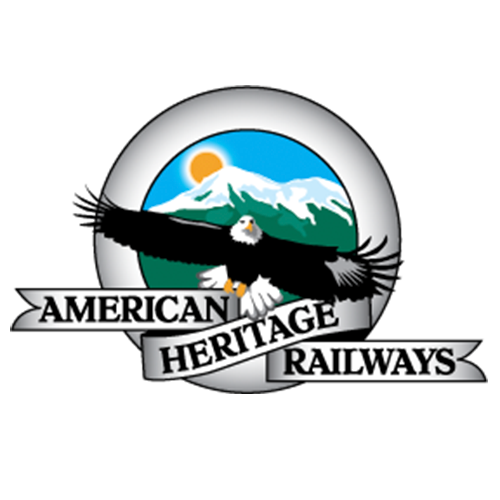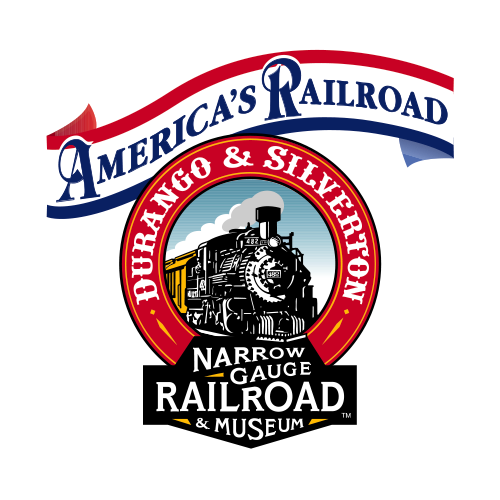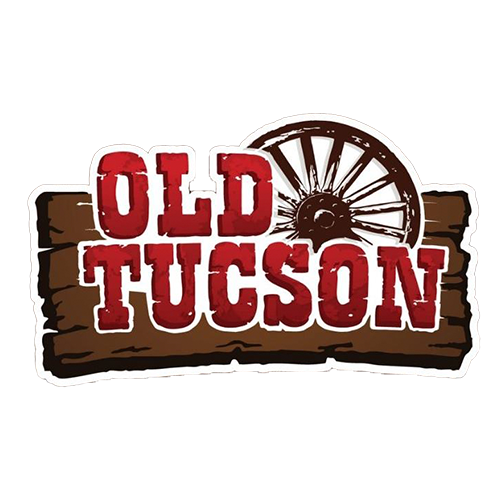- Ride With Us
- Packages
- Events
- THE POLAR EXPRESS™ Train Ride
- Winter Photographers' Special
- Romance on the Rails
- Shamrock Express
- Rio Grande Southern Galloping Goose #5 Excursions
- Hops & Hops
- Narrow Gauge Day
- D&SNGRR Brew Trains
- Cowboy Poetry Train
- Fall Photography Special 2024
- Snowdown Balloon Rally Train
- Ghost Crawl: Haunted Durango Train Museum Experience
- Wine & Rails
- Groups
- Explore
- Blog
- About Us
- Gift Shop
Use Durango Train as Your National Parks Trip Basecamp
The Durango Train is the perfect destination to kick start your road trip with its abundant access to the Rocky Mountains, National Parks, monuments, and beautiful sights. In fact, Durango, Colorado is located in the heart of America’s Southwest Grand Circle; it is the only point in the United States shared by four states. And this circle contains the largest concentration of National Parks and monuments in the U.S. You can easily make Durango your basecamp, your starting point, or an additional stop for your road trip with the help of all the information on this page. From Travel Tips to Itineraries, we make planning your trip to the Durango Train and National Parks easy!
Visiting National Parks is a great way to explore and appreciate the natural beauty of the United States while enjoying a variety of outdoor activities. There are over 400 national parks in the U.S., each with its unique features and attractions. It’s a fantastic way to connect with nature and enjoy the great outdoors while learning about the history and culture of the United States.

Plan your Perfect Trip with Our Itineraries
A road trip can be an amazing way to explore new places and experience the freedom of the open road and we’ve created some itineraries to help you plan your trip. These itineraries will show you how to get from Durango to many other national parks and monuments, as well as, some other stops we think you might enjoy. You may even discover some of the best experiences and other hidden gems along one of our national parks road trip routes!
-

 National Parks Itinerary Spotlight
National Parks Itinerary SpotlightMonument Valley
A part of the Navajo Nation, Monument Valley is known for its towering sandstone rock formations including the Mittens, Elephant Butte, and the Three Sisters. -

 National Parks Destination Spotlight
National Parks Destination SpotlightArches National Park
Arches National Park covers an area of over 76,000 acres and contains over 2,000 natural sandstone arches, including the famous Delicate Arch. It is also a popular spot for stargazing, due to its remote location and clear skies -

 NATIONAL PARKS DESTINATION SPOTLIGHT
NATIONAL PARKS DESTINATION SPOTLIGHTHorseshoe Bend
Nearly 277 miles long and up to 18 miles wide, the Grand Canyon is one of the most famous National Parks in the United States. Gaining a view of Horseshoe Bend, located on the east rim, is accessible by a 1.5 mile hiking trail. -

 NATIONAL PARKS DESTINATION SPOTLIGHT
NATIONAL PARKS DESTINATION SPOTLIGHTYellowstone National Park
Yellowstone is the only place in the United States where bison have lived continuously since prehistoric times. This population is allowed to roam relatively freely over the expansive landscape of Yellowstone National Park and some nearby areas of Montana. -

 National Parks Destination Spotlight
National Parks Destination SpotlightOld Tucson
Old Tucson was originally built in 1939 by Columbia Pictures as a replica of 1860s’ era Tucson for the movie Arizona (1940), starring William Holden and Jean Arthur. Other films that have been filmed in Old Tucson include Three Amigos! (1986) and the popular film Tombstone (1993).
Travel Tips
How to Plan
-


 Research Your
Research Your
ItineraryThere are many National Parks and sights to see nearby The Durango Train so it is important to start by deciding where you would like to visit.
Luckily, we’ve made it easier by creating a few itineraries you can choose from. These itineraries contain suggested stops mapped out for you with mileage listed, what time of year to go, and how long you should spend on your trip.• STEP ONE • -


 Set Your RouteLuckily, we have done this step for you in our itineraries. Each one has every stop mapped out for you!• STEP TWO •
Set Your RouteLuckily, we have done this step for you in our itineraries. Each one has every stop mapped out for you!• STEP TWO • -


 Plan Your
Plan Your
AdventuresOnce you have an idea of where you are going, you’ll need to decide how much time you’d like to spend at each stop.
Each itinerary lists a suggested trip time, but you can always spend more time at each stop if you’d like. You’ll need to consider how long it takes to drive to and from each stop.• STEP THREE • -


 Plan Your Vehicles
Plan Your VehiclesYou’ll want to start by deciding if you are driving your vehicle from your home or renting one from the airport.
If you choose to rent a car, we suggest reserving it at least 4 to 6 weeks in advance from when you will arrive. If you choose to get an RV, you’ll have to find an independent operator, as you can’t rent them at most airports.• STEP FOUR • -


 Where to Stay
Where to StayMake your hotel or camping reservations early. In some of the more busy National Parks, you may only be allowed to stay in the park overnight with reservations.
Reservations for many national park campsites and lodges book 3-6 months or more in advance. Additionally, the most popular campsites sell out within seconds of going online, so plan early!• STEP FIVE •
Getting to Durango, CO
-
By Air – Domestic
Airlines Serving Flights to Durango-La Plata Country Airport (DRO)
Year-Round
Seasonal -
By Air – International
Direct International Flights to Denver
Direct Flights to DenverBy Car
-
From the East (Denver, Colorado):
- Take I-25 South towards Colorado Springs.
- Merge onto US-160 West via Exit 58B toward Walsenburg/Alamosa.
- Continue on US-160 West through scenic mountain passes and small towns like Pagosa Springs until you reach Durango.
-
From the North (Montrose, Colorado):
- Take US-550 South, also known as the Million Dollar Highway, which offers stunning views but can be challenging due to its steep grades and sharp curves.
- Follow US-550 South through towns like Silverton until you reach Durango.
-
From the West (Flagstaff, Arizona, or Farmington, New Mexico):
- If coming from Flagstaff, take US-160 East through Tuba City and Cortez until you reach Durango.
- If coming from Farmington, take US-550 North, which will lead you into Durango.
-
From the South (Albuquerque, New Mexico):
- Take I-25 North to US-550 North via Exit 242 toward Aztec/Bloomfield.
- Follow US-550 North until you reach Durango.
What to Pack
-
Clothing
What type of clothes you pack for your trip will depend on the time of year you visit. Generally, we suggest packing layers since that can easily be removed or added. In addition, hiking shoes with good traction are wise if you plan on exploring some of the trails that many parks offer. Lastly, we suggest packing a rain shell jacket for the year-round wind that occurs at higher altitudes.
-
Portable Charger
A portable charger is always great to have as backup for when your phone or any other devices run out of battery. They are especially great for when you are on a long drive.
-
First-Aid Kit
When it comes to a national parks trip, especially if you choose to camp, it is crucial to have a first-aid kit. Minor scrapes, cuts, and bumps are inevitable when adventuring, so you will need Antibiotic ointment, bandages, gauze, and other basic supplies to treat them. It is also helpful to bring preventative supplies, like insect and mosquito repellent.
-
Maps
A GPS or GPS map is great for giving you directions when you are driving or on a hike, but it can be difficult to have access to cell service when you’re in the wilderness. This is why it is important to also have a map. You can find them at any national park visitor or welcome center when you arrive.
-
Universal Plug
If you are traveling from out of the country, it is important to bring a plug that works in the United States, or a universal plug that will work in any country you plan to visit.


Road Trip Tips
1. Make a Packing List
2. Make a Playlist
What’s a road trip without a road trip playlist? Make sure to download your favorite songs to keep you singing across the miles. Another great option is to have some podcasts downloaded to help keep you entertained.
3. Restroom/ Gas Breaks
You never want to find yourself without gas or a restroom. Emergency stops on mountainous roads can sometimes be dangerous, or even impossible. Additionally, in the the desert or in the mountains, you may be without a cell signal to find your next gas station. Make sure to plan accordingly!
4. Make Pit Stops
Sometimes the best stops are the unexpected ones. Try to take pit stops to stretch your legs and give yourselves a break! It’s nice to break up your drive with a pit stop to go on a scenic hike and have lunch.
“There is nothing so American as our national parks… The fundamental idea behind the parks is that the country belongs to the people, that it is in the process of making for the enrichment of the lives of all of us.”


International Visitors
-
Clothes
The weather in the United States changes often and the climate is very diverse, so make sure to understand the weather and season you are traveling in to have the proper clothing. You make be going to metropolitan cities to high elevated mountains with below freezing weather at night. -
Camera Equipment
The United States is one of the most unique places with lots of different sceneries. From mountains and forests to deserts and open roads, you’ll have a trip of lifetime, so be prepared to take lots of photos. We recommend brining a cell phone with a camera or a SLR camera to get some great photos. -
Cell Phone
Make sure to check with your local cell phone provider about coverage and plans before you visit the United States. Keep in mind that most national parks have limited to no cell service. You can also buy a pre-paid phone plan once you get in to the United States for local calls. Additionally, many places, like coffee shops and hotels, offer free WiFi. -
Print and Save Documents Online
We suggest printing out all of your documents online and keeping them all together in one place. This is great to have as a back up in case things get lost in your email, you lose service, or your phone dies.
Additional Durango Resources
Durango, Colorado is known for its scenic beauty, outdoor recreation opportunities, and historic charm. It is the heart of America’s Southwest Grand Circle and the perfect stop on your national park road trip. Here are some additional resources to help you plan your visit to Durango.
Frequently Asked Questions
This depends on the park. Most national parks are open year-round, but may have some closed entrances due to weather or construction. The best way to find out about specific opening hours and road closures is to visit the specific park page on the NPS website.
Yes, there are general rules when visiting national parks. The official rules can be found on the official national park website. It is also important to note that some rules change seasonally. For example, campfire regulations may fluctuate depending on drought conditions and the risk of wildfires.
Durango, Colorado is a small town that prides itself on being welcoming to all people, including international visitors. Durango has a relatively low crime rate and takes large steps to ensure the safety of its residents and visitors. Additionally, the community actively works to promote inclusivity. Visitors can feel confident that they will be treated with respect and can enjoy all that Durango has to offer in a safe and welcoming environment.
Yes, each national park offers guided tours that are hosted by the National Park Service (NPS) or by certified guides. You can find more information about guided tours at each park’s visitor and welcome center.
Many national parks have digital, downloadable versions of park maps, as well as, copies in visitor and welcome centers.
Most of the national parks are accessible by car, RV or bus. When you enter the park, you’ll need to pay an entrance fee, which is usually between $20-$40 per vehicle. Depending on the park and season, park passes may be valid for up to seven days. If you plan to visit several national parks, we recommend you buy the America the Beautiful Pass for $80.






Start Planning Your Adventure
Want to learn more about national parks and receive our road trip secrets to help you plan your next trip? Subscribe to our newsletter for more helpful information and resources to help you plan your next adventure to some of the most stunning and unique landscapes in the world.
Whether you’re a seasoned traveler or just getting started, our newsletter is the perfect way to stay informed and inspired.
"*" indicates required fields

© Durango & Silverton Narrow Gauge Railroad. All rights reserved.
Privacy Policy
Site developed by ![]() Agency Tourism Marketing
Agency Tourism Marketing

















